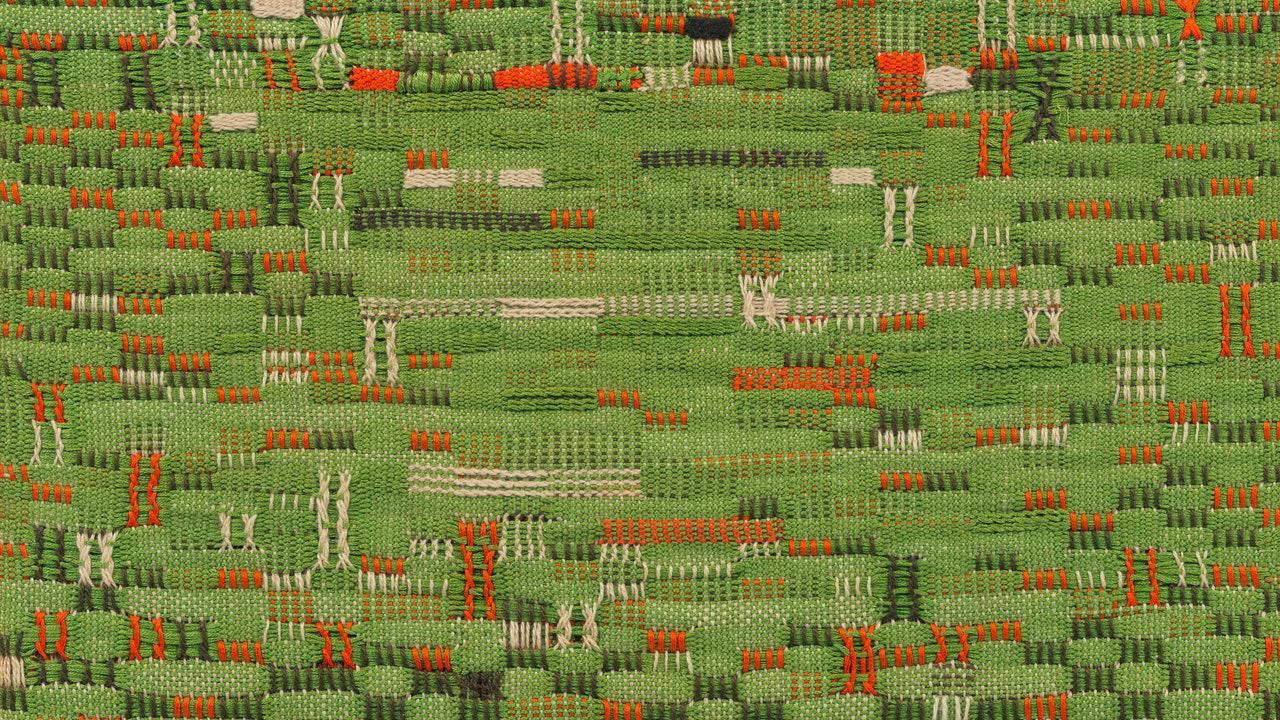Anni Albers Transformed Weaving, Then Left It Behind

2024-04-12 词
Critics reach for a few key words with Albers: “crisp,” “precise,” “mathematical.” I would like to propose “frightening.” Her work arouses the suspicion that beauty is simple and we’ve all been overthinking it. None of the shapes or colors in “Pasture” (1958), a smallish plot of mainly red and green threads, would be out of place on a roll of Christmas wrapping paper. The trick is that each component lingers long enough to make any change feel like an event; checkerboard red-and-green switches to green-on-black, then green-on-black but with stutters of white and red. Patterns unfold horizontally, but every so often a twisted pair of vertical threads (it’s called a leno weave) slashes its way out of the grid. An invisible logic, mysterious but never precious, presides. Most visual art addresses whoever happens to be looking at it. “Pasture” stares straight through you, at some distant, tranquil future in which primordial beauty is the only kind left.
免责声明:本文来自网络公开资料,仅供学习交流,其观点和倾向不代表本站立场。